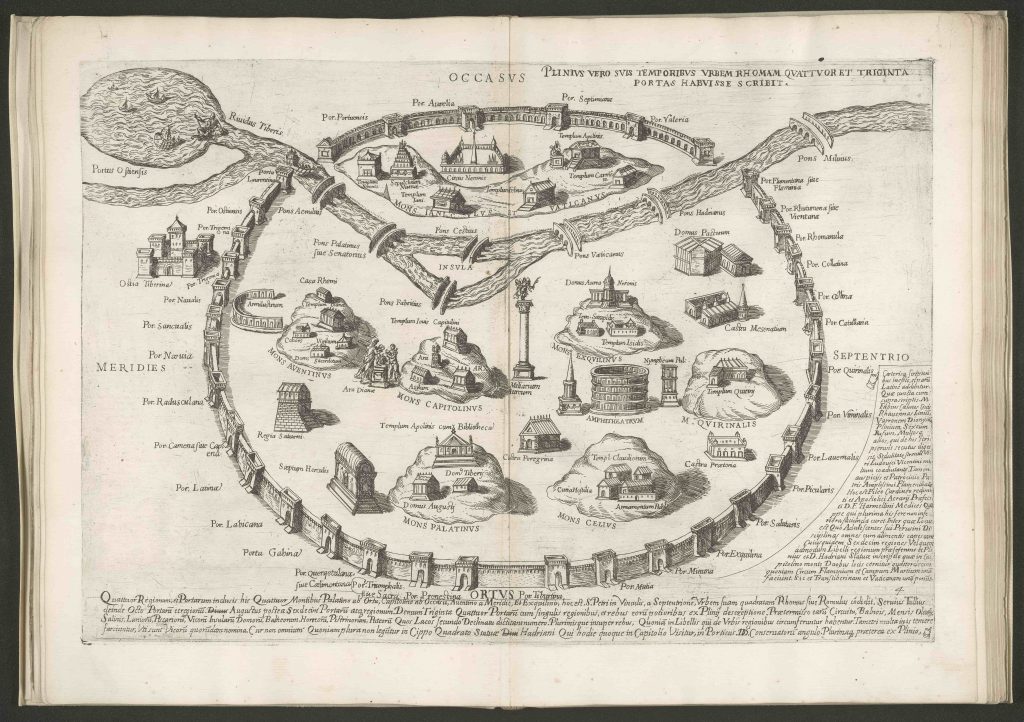Enjoy this post by Victoria Popoola, one of our Special Collections Freshman Fellows for the 2022-2023 academic year.
Latin is widely considered to be a niche language. Although many of our modern languages are derived from it, it is labeled as a “dead language,” and its current use can only be seen in religious or academic contexts—in very particular subsets of people.
This past year, I had the opportunity to examine a variety of untranslated, neo-Latin works with the Special Collection’s Freshman Fellows program under the supervision of my mentor Mackenzie Zalin. The overarching focus of my project was Latin from an engineering perspective with the intention of bridging the STEM and humanities divide and showing their intersectionality, as someone with a background in both disciplines. Initially, my project was going to be centered around Roman aqueducts, a famous feat of Roman engineering. However, most of the works on this subject had already been translated and published by scholars. Therefore, we began to cast a much wider net over Roman water systems (i.e., the baths and fountains) and tried to find interesting and relevant works that could fulfill the project’s goal. During this time, I was able to explore several different works in this area. I even translated an annotation made in the 18th century in a text about Roman history, tradition, and culture (see my blog post from earlier this year). Although the content was interesting, it proved to be too disconnected from the original goal.
In the end, we arrived at Marcus Fabius Calvus’s Antiquae urbis Romae cum regionibus simulacrum, a portfolio published in Rome in 1592 and held in Special Collections here at JHU that roughly tracks the development of the city of Rome over time. Although this deviated from my original intentions, the work still proved relevant in that it focuses on Latin in an engineering/infrastructure context. We decided on translating what appears in the image below due to its depth and relatively detailed map compared to the other entries in this piece:

Translating the text into coherent and accessible English took almost the entirety of the second semester. In addition to trying to form a working translation of the text, we also had to consider Calvus’s personal writing choices. His entire description is broken up into only a few sentences due to the fact that he keeps lengthy blocks of ideas together throughout the texts and elaborates on minute details. The hardest part of translating was chunking together these pieces of text and reasonably inferring their correct positions to get his intentions across. One notable example is found in the beginning, when he uses inclusis his Quattuor Montibus (“with these four hills having been shut in”) to add an extra description to the original foundation of Rome. This phrase is a dependent clause (as an ablative absolute) which disrupts the main idea of the first block of information, so it was difficult to translate it while keeping the rest of the text cohesive. Even later on, when Calvus acknowledges several people who either influenced or helped enable him to complete his Simulacrum, the decision to place this into one chunk of the entire passage required us to find every different type of structure within the text, relate it to the idea he is trying to convey, and strategically place it next to the other ideas to form a more cohesive whole. Nevertheless, the challenge that this text presented was both interesting and worthwhile. It provided me with a lot of insight into the subjectivity of writing and translating Latin as well as a process to go about doing both.
In addition to learning more about the Latin language, it was also fascinating to learn about the historical and cultural context behind the map as well as many of the references Calvus makes throughout his description. Though some parts of his writing were unique to Calvus’s character, such as offering criticism to other scholars in the middle or making a quick aside, others seem to be in keeping with what a scholar would include in their work anyway (though maybe not in the middle of a description of a map), for instance, Calvus’s extolment of Pope Clement VII, who sponsored his creation of the Simulacrum. During his commendations, Calvus interestingly refers to the Pope as the Flamen dialis, a position that only seemed to be connected to Jupiter throughout history. Although his reason for using this title in his description remains unclear, I think that it still serves as a valuable reference and raises some fascinating questions on its own.
All things considered, this undertaking was a journey that I would be honored to take again. The creative intuition and the processes of going through Calvus’s Simulacrum allowed me to understand language and culture more in the context of both ancient and relatively recent Roman history. This was a project that I would recommend to anyone, regardless of their academic discipline.
